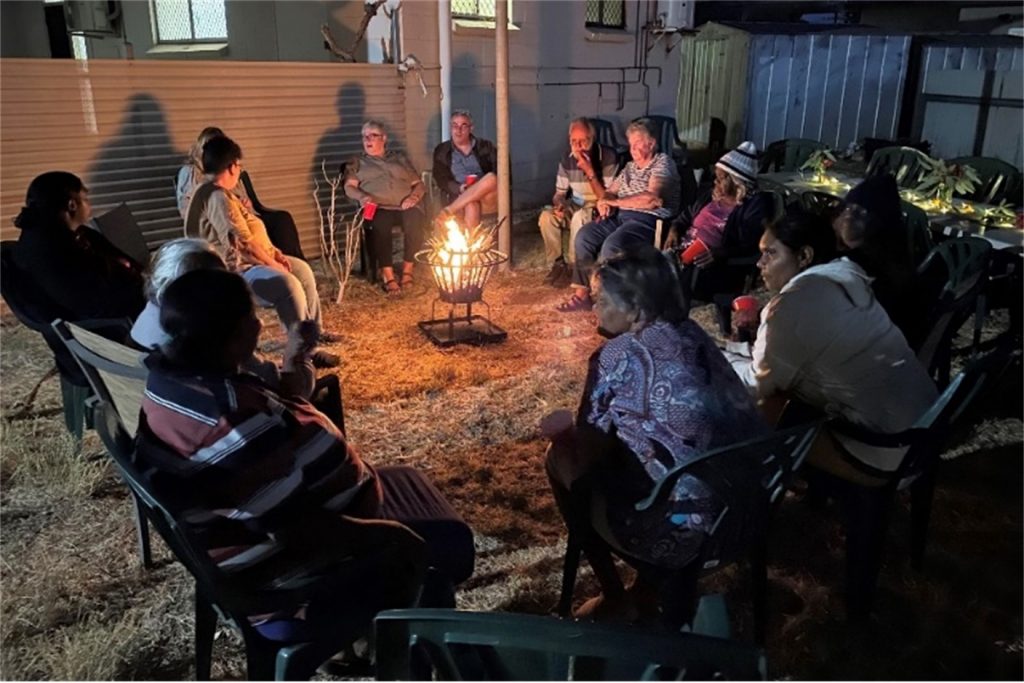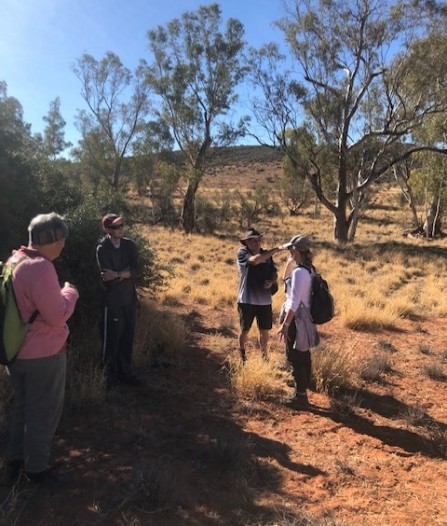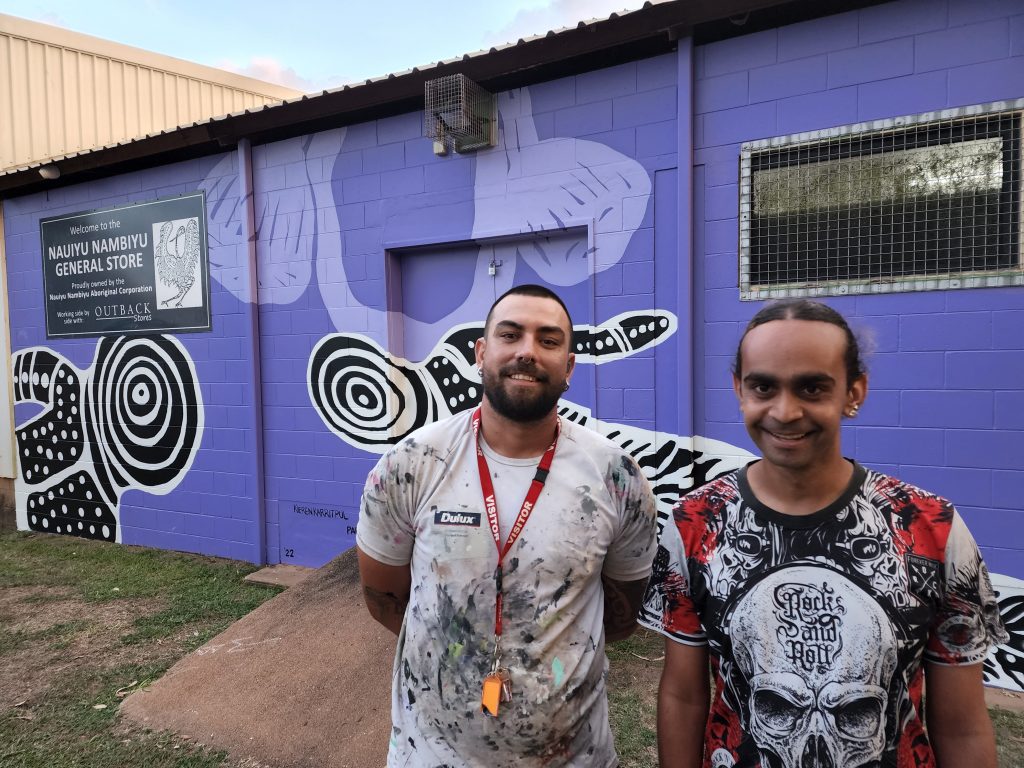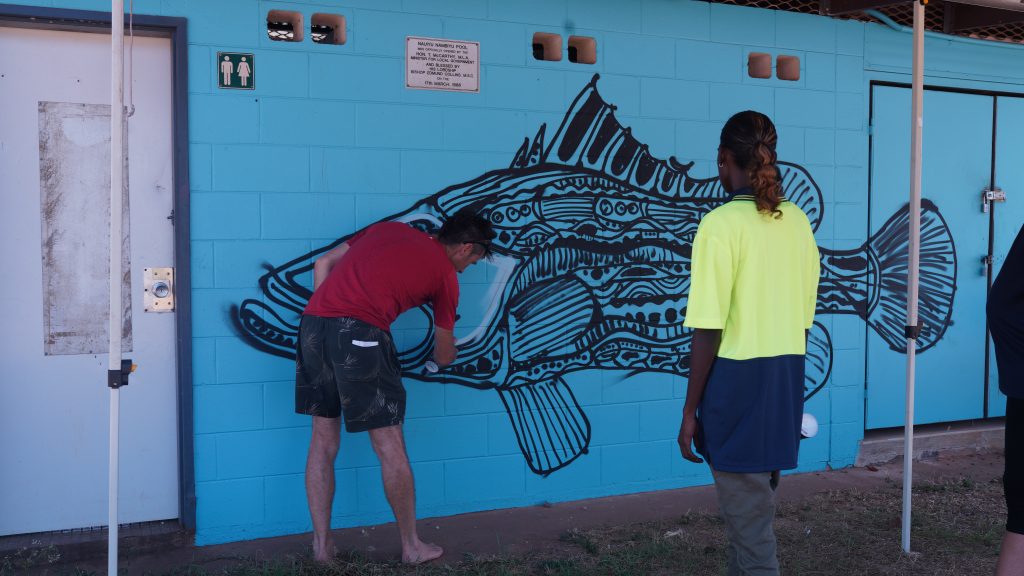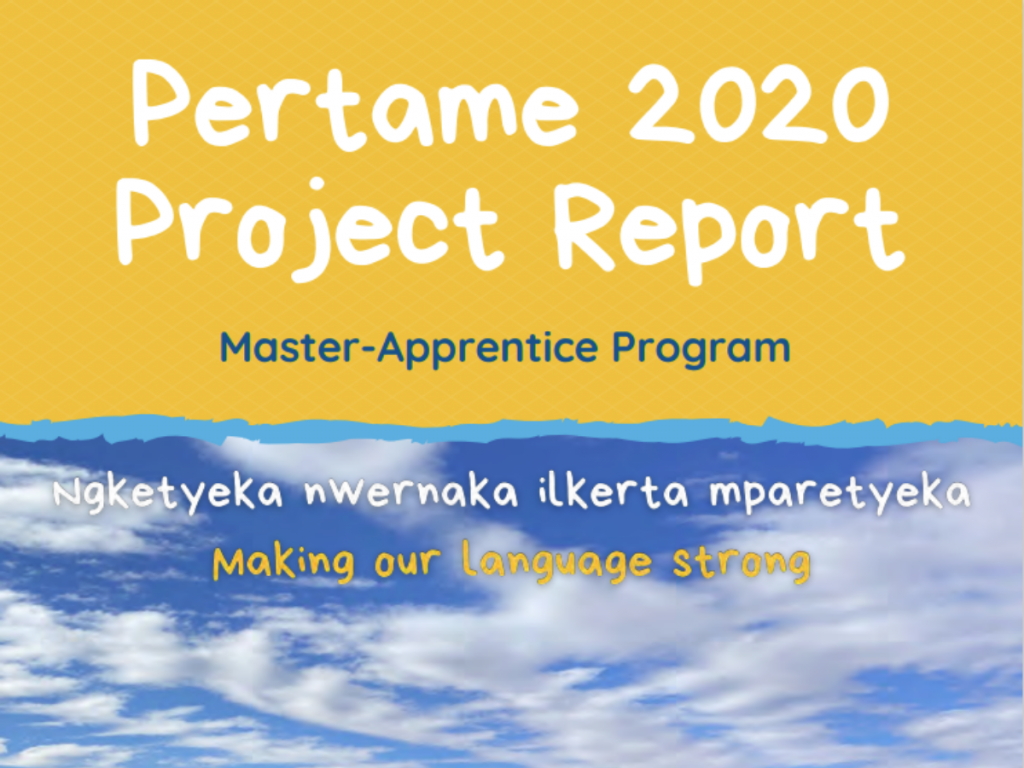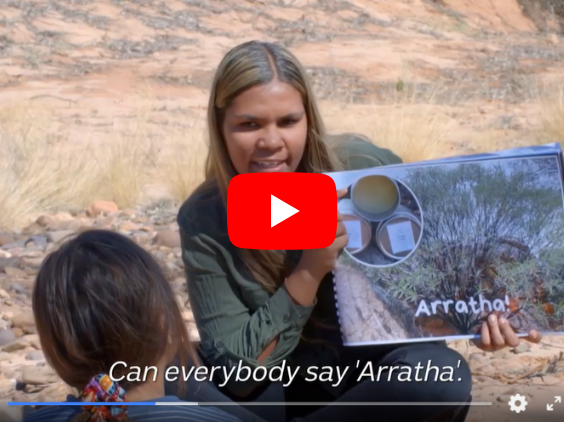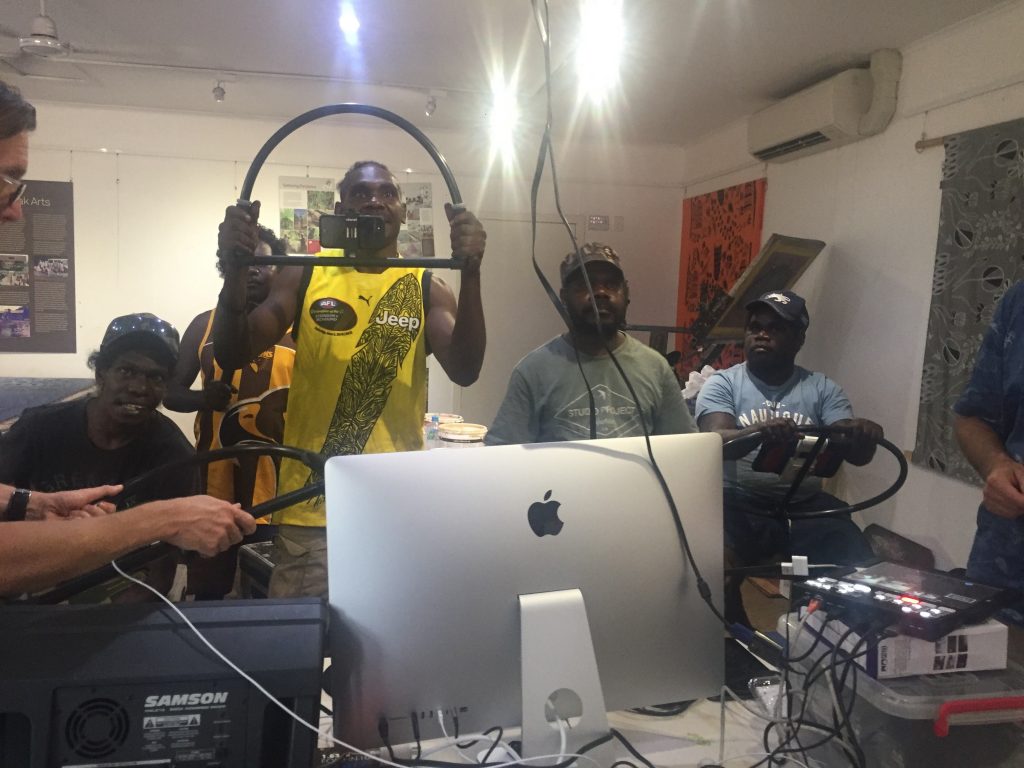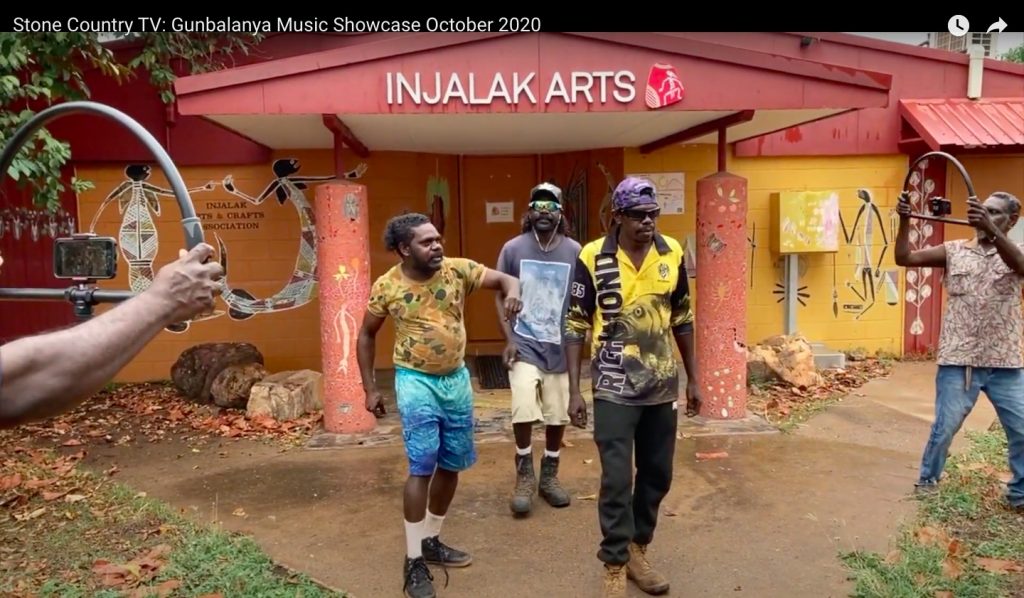Foundation for Rural & Regional Renewal (FRRR)
Wagait Beach is located on the Cox Peninsula just west of Darwin and is accessible by ferry (15 mins) or road (90 mins). Young people make up around 14% of the 461 residents and beyond seasonal sports, there are very few organised activities on offer locally. Parents and young people alike had been keen to increase access to drug and alcohol free activities which would build skills and support emotional, social and physical wellbeing and in 2021, Wagait Shire Council supported to the creation of the Wagait Youth Group.
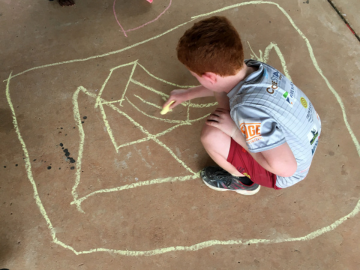
The Council received a Strengthening Rural Communities grant of $6,000 to assist with establishing their youth program that focused on building more opportunities in the community for young people including the co-design of a local Skate Park. Across four skate workshops, the children designed, built, and decorated portable ramps that went into immediate use, while plans are now well underway for the permanent skate park. Beach cricket, movie nights and discos for the school aged children have since followed.
In addition to a more physically active lifestyle, the young people felt listened to and have become more engaged and active in civic affairs. A collaboration developed between Health Lifestyle Seniors participants and the young people which saw the seniors sharing their skills such as cooking and sewing, which in turn built intergenerational bonds of appreciation and understanding.
Furthermore, the Council employed a Year 12 student for 12 months in the role of Youth Development Officer. This role takes the lead on designing, delivering, and reporting on the ongoing youth program. The Council hopes to continue offering this position annually and expand it into an internship, covering other aspects of council work and community service to develop youth leadership skills locally.
Ramingining, an Aboriginal community home to around 870 people, is situated on the edge of the Arafura Swamp in Arnhem Land, approximately 560 kilometres east of Darwin in the NT. The community is made up of mainly Yolngu people.
Ramingining artists and community members, through the Bula’Bula Arts Centre, wanted to provide more activities that strengthen the community’s connection to their cultural roots, knowing this is integral to people’s health and wellbeing. They also wanted their young people to learn to practice and celebrate their culture from Elders.
Following Cyclone Lam in 2015, the community successfully lobbied for a new cyclone shelter. The completed shelter has multiple uses including as recreation centre, a space for youth programs, a basketball stadium and the occasional movie theatre. The concrete block building was practical but somewhat bland, without representation of the local Yolngu culture.
Thanks to a $9,973 Strengthening Rural Communities grant, funded by the Bertalli Family Foundation, the Bula’Bula Arts Centre was able to bring together the older and younger generations of Yolngu people to commemorate their culture through the creation of two large public murals on the outside walls of the cyclone shelter.
Yolngu culture is built on a kinship system that consists of two moieties, Dhuwa and Yirritja, and these are the foundations of the skin systems, totemic relationships, storylines, songlines and more. Each mural, approximately three by five metres, honours one of the two moieties. The murals are a huge achievement visually depicting 20 unique stories. Twenty-one Bula’Bula artists, alongside about 20 Ramingining youth, created the murals over several sessions during the January 2022 school holidays.
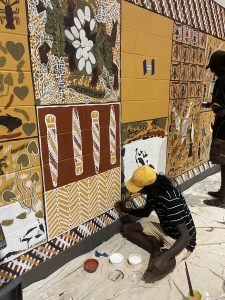
The painting sessions were observed by many other community members, who came along to see what was happening. The murals have been highly welcomed by the community, bringing smiles and words like letchu (awesome), manymak (great) and yolngu rom (our culture).
The younger people have developed a better understanding of their culture, and the broader community has a greater sense of pride and self-esteem from the creation of a more culturally appropriate meeting place. The murals also act as a teaching tool, with many families coming to show their children and tell the culturally significant stories.
The Bula’Bula Arts Centre is a locally governed, owned, and operated Aboriginal Corporation situated in the heart of the community and plays an important role supporting more than 150 artists to maintain and strengthen their cultural practices. It also offers training, education, career pathways and enterprise opportunities, along with providing social services contributing to the social and physical health of the community.
The most successful and proudest part of the project for the Bula’Bula Arts Centre was the engagement of Yolngu people from the initial concept to execution and finally, the outcome and ongoing nature of keeping culture strong.
Dhuwa wall artists included: Gary Smith, Dorothy Djampilil, Daniel Warrulukuma, Evonne Rraraypum, JB Fisher, Joy Borruwa, Billy Black, Joy Burruna, Lisa Gurrulpa and Shannon Ashley.
Yirritja wall artists included: Joanne Mombuyngu, Selena Munguluma, Peter Gambung, Romeo Gaykamangu, Bobby Bununggurr, Andrew Malibirr, Johnny Malibirr and Evonne Gaywrri.
Artist helpers and art workers: Selena Galang, Kylie Pascoe, Steve Malibirr, Ross Dhaparuwuy and Jasmane Malibirr.
The East Arnhem Regional Council authorised the creation of the murals and also provided staff time in-kind to assist with the project.

Eastern Arrernte Country
Ltyentye Apurte Catholic School (LACS) is one of the most successful remote Aboriginal schools in central Australia and the NT. It is the only school serving the 600-strong community of Ltyentye Apurte (pronounced ‘L-Ginga Porter’, which means ‘clump of beefwood trees’ in the Arrernte language) or Santa Teresa. A number of the facilities at LACS are communal, notably the library and computers. The community is 83 km south east of Alice Springs in semi-desert country. Temperatures are extreme, ranging from -1 to 45 degrees but there is year-round access via an unsealed road.
The local Arrernte people are bilingual and speak Eastern Arrernte and English (which is often their second or third language). The Arrernte language and cultural program is a key part of the curriculum at LACS.
In Santa Teresa, extreme socio-economic disadvantage is the norm, with residents and the school facing many challenges, notably extremely poor housing and health, high unemployment with minimal employment opportunities, adults suffering from poor mental health and a high number of students suffering from intergenerational trauma. Remote schools in general have a major issue with teacher retention due to the complex challenges of students and their families. The average stay of a teacher in NT schools is 7 months and 9 months in catholic schools. Existing senior staff frequently work 80 hour weeks regularly wearing multiple hats in part due to a lack of teachers.
According to the Principal at the time, to a great extent, the future of Santa Teresa depends on the school providing the optimum best education for Santa Teresa youth – “To make the remote community of Santa Teresa strong, we must make its school strong.”
There are currently 126 students on roll, from Pre-School to Year 11. They are all Indigenous and bilingual. Most of the teachers at LACS are non-Indigenous and come with a range of experience from mainstream education. The school is also a major employer of the local Arrernte people, with approximately 60% of Indigenous staff filling a multitude of critical support roles. Teachers work as members of a team in partnership with local Indigenous people and Arrernte assistant teachers and tutors.
Isolation and the challenges of living and working in a community context mean that staff need all the support they can get, in terms of building resilience. Ongoing change is the norm, with the last two years (2020/21) seeing significant change and uncertainty. There is often a significant turnover of new staff, which presents additional challenges to building trust and resilient community.
The impacts of these factors are significant, including very high levels of stress, distraction from the mission of educating students, lower engagement, uncertainty about the future, change fatigue, staff burnout, talent loss and lower trust in leaders.
To try to address this, the then Principal knew they needed to help teachers and staff build resilience, sustainable high performance and change agility. They used a $10,000 grant from FRRR, through the Strengthening Rural Communities program, funded by the Tim Fairfax Family Foundation, to run the Resilience Educators Program (REP).
The REP began with all teachers completing a Resilience Diagnostic, prior to a two-day workshop. The Diagnostic measured individual resilience in areas such as emotional regulation, self-confidence, compassion, exercise, sleep and nutrition. Staff then participated in a two-day workshop, facilitated by Paul Salmon, called “Thriving Through Change and Challenge”. Each staff member created three goals to help improve their resilience and the option of having an accountability buddy or sessions with a resilience coach to support them in reaching their goals.
After the workshop, the teachers were given access to an app, which provided a detailed resilience report and materials to develop new skills. They also committed to participating in a range of activities as groups of staff and the whole staff community, such as an evening walking group, weekend trips away and a regular BBQ breakfast. This was followed up with a visit from the Resilience coach, which led to three shared goals being created.
Despite challenges in rolling this out due to the pandemic and its subsequent impacts, staff collaborated to implement wellbeing activities based on their learnings from the workshops and the ongoing use of the Resilience App. They continue to come together as a community to support one another in challenging times.
The outcome has been an improvement on the health and wellbeing of the whole community.
“All staff became more aware of the importance of resilience and the necessity to plan for how to manage stress and cope with the added burden of the pandemic. There is also a greater understanding by leadership of the necessity to prioritise staff wellbeing through strategic planning using an integrated holistic approach.
“It has become part of our school culture for staff to check in with each other on how they are travelling, especially concerning sleep, exercise and levels of stress. It is now becoming part of our meetings to start with a partner check in or short meditation activity. We introduced a new wellbeing curriculum program, MindUp for Life, which not only teaches the knowledge and skills children need to regulate their stress and emotion but also supports teachers in building positive relationships with students and the broader community.
“There is a more holistic focus on wellbeing and resilience with an area created in the staffroom where staff relax and do mindful colouring. Plus, there are opportunities for staff to publicly acknowledge and show gratitude for effort, and pampering products for staff in our rest rooms,” said Pamela Brown, Acting Principal.
For more inspiring stories like this, head to our FY 2021/22 Annual Review.
Access to reliable, high quality mobile phone coverage is important for everyday activities. But it is critical when it comes to the lifesaving activities that the Freycinet Volunteer Marine Rescue Association undertake on a regular basis.
Based in Swansea on Tasmania’s east coast, the Association’s base is located on low lying Council land, which impacts the mobile phone signal from the local Telstra tower as it requires a direct line of sight for best coverage. The building is steel framed and clad, further blocking the already weak mobile signal. This meant members had to go outside of the building to obtain a mobile signal, which at best was two bars. Going outside to check the Bureau of Meteorology website prior to launching a rescue vessel involved waiting several minutes to access a signal and the important weather data.
COVID exacerbated the need for a mobile booster to provide stronger and more reliable mobile coverage as member training, which the Australia Maritime Safety Authority requires to be to the same standard as commercial mariners, had to move to Zoom sessions. Zoom provided additional benefits by allowing members the opportunity to remain connected and still have timely input into the Association’s activities.
Another challenge was that family members could not contact volunteers if they were inside the building. If there was an incident or accident while working within the building, there was also no way to make an emergency call without going outside – potentially leaving an injured member unattended.
A $2,244 grant from FRRR’s Strengthening Rural Communities program, funded by a private donor, supported the installation of the mobile booster. The project, described by the Association as ”one of our best projects in over 20 years of operation”, resolved all the issues of being able to access reliable, high quality mobile coverage in the Association’s building.
Results after installation showed 100% signal strength inside the building, providing a safety net for volunteers working on site and enhancing community safety, as information on emergency situations can now be accessed without delay.
For more inspiring stories like this, head to our FY 2021/22 Annual Review.
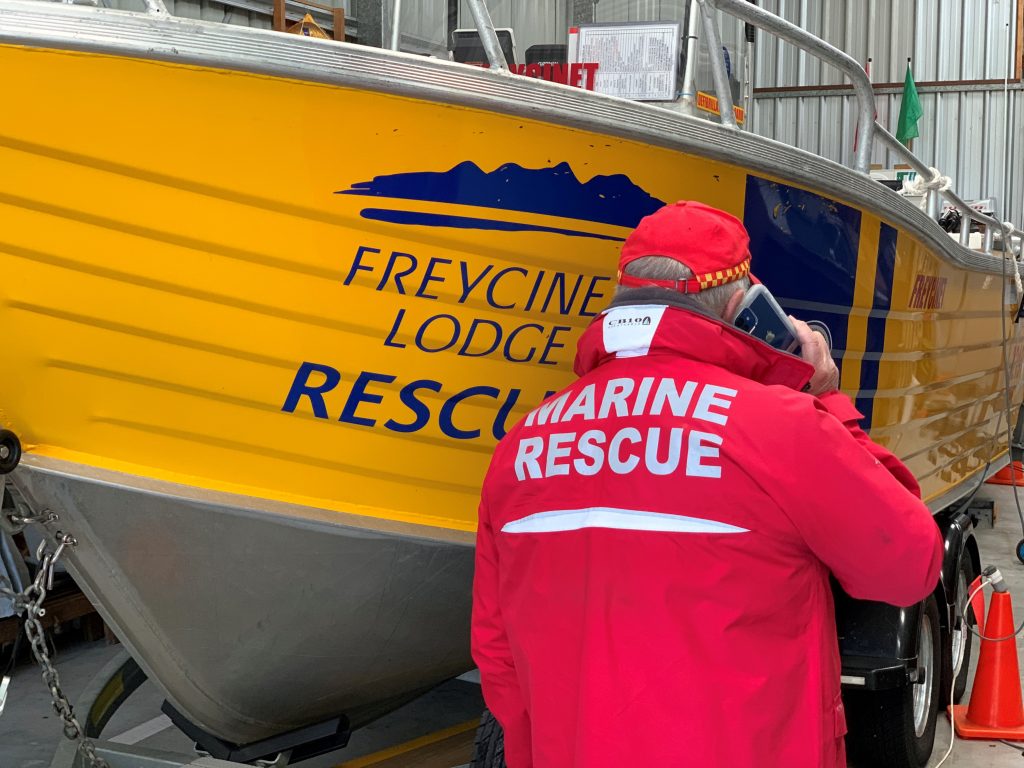
Malak Malak People
Nauiyu is an Aboriginal community of 444 people in the Daly River region in the Northern Territory. Their place, around 2.5 hours drive from Darwin, is said to be one of the best Barramundi fishing spots in the country, and locals hold a strong connection to their land and culture. Despite the idyllic description, Nauiyu experiences alcohol and other drug misuse within its small population. Yet there is strong community support for real solutions that respond to community needs, are culturally appropriate and involve building local capacity and furthering local leadership.
Enter Red Dust. Founded by John Van Groningen, the organisation was born out of his work with youth in the Aboriginal community of Lajamanu in 1984. Today, it delivers innovative health promotion and community development programs that are co-designed through trusted relationships with remote First Nations communities. For the people of Nauiyu, a community-based diversion program celebrating cultural identity and pride would provide a means to connect and engage the vulnerable community.
Consulting the community, Red Dust’s Local Drug Action team coordinated the Red Dust Community Art Collaboration project with local organisations. Green River Aboriginal Corporation identified sites for the murals; Merrepen Arts provided the connection to local artists and culturally relevant iconography; and Ironbark provided access to volunteers and project participants. Proper Creative, based in Darwin, was commissioned to paint the murals in conjunction with local project participants.
With collaboration between local artists, community members, young people, and service providers, and a $5,000 Strengthening Rural Communities grant funded by the Tim Fairfax Family Foundation & Pinnacle Charitable Foundation, Red Dust will deliver three large murals. The project will not only create beautiful public spaces and bring the dreaming of the Nauiyu community to life, it will also support the health, wellbeing and future opportunities for local youth.
The images below feature the impressive first mural, featuring Daly River artist Kieren Karritpul. https://www.reddust.org.au/blog-posts/ldat-2022-05-nauiyu
Yarralin Country
Can you imagine not being able to access a washing machine regularly? Sadly, that’s the reality for many people living in remote First Nation’s communities. Seven out of ten Aboriginal children living in these remote communities will contract scabies before their first birthday. Community homes are overcrowded, 59% do not have washing machines and only 38% of people living in communities wash their clothing and bed linen. This is largely because of a lack of access to power and a regular supply of detergent.
In addition to the health benefits, ready access to clean clothes removes barriers to job and school attendance, encourages community social inclusion and provides an enhanced sense of self pride and purpose.
The North Australian Aboriginal Charitable Trust (NAACT) is the charitable arm of Aboriginal Investment Group (AIG), a registered charity and a genuine not-for-profit entity. NAACT is dedicated to the improvement and regeneration of remote Aboriginal communities and the creation of sustainable employment opportunities for Aboriginal people.
NAACT’s goal is to provide every Aboriginal person the opportunity to have clean clothes and a disease-free home.
That’s where the Remote Laundries Project comes in. It delivers fully automated, custom-built, commercial standard, fit-for-purpose laundries in remote Northern Territory Aboriginal community locations. The washing and drying cycles are provided at no cost, with detergent and chemical grade sanitiser automatically injected into the wash-cycle. Each laundry program site generates five sustainable meaningful positions, is 100% locally staffed and operates 38 hours per week across six days. The laundries allow every sector of the community to access clothes and bedding washing facilities, which increases quality of life by breaking community cycles of disease and sickness common in remote Aboriginal communities. This delivers clear tangible health, social and economic benefits.
It’s an innovative business model – a social enterprise – driven by Aboriginal people. Robust community consultation gives voice to those who will benefit from the project including Traditional Owners. AIG works in conjunction with the relevant on-site Aboriginal Corporation and is directed by this collaboration with Traditional Owners for all significant decisions about development and delivery.
While the majority of this project, valued at $742,000, comes from the Aboriginals Benefit Account, NAACT originally approached FRRR for a grant of $10,000 to go toward the cost of the machines. However, COVID delayed the whole project, including the release of other funding. The project managers and community representatives were keen to ensure that the machines were ready to go when restrictions lifted and other funding was released. The grant was funded, thanks to the support of the Tim Fairfax Family Foundation, through the Strengthening Rural Communities program. NAACT applied for a variation of the original grant agreement, which allowed them to use the grant as a deposit to purchase the washing machine in advance of the Yarralin Remote Laundries Project’s commencement.
In their grant acquittal, Brittany Ciupka, Project Officer, said that FRRR was exceptional, quick to respond and flexible.
“We greatly appreciate FRRR allowing us to secure the machines while we finalised ABA negotiations. This will save large amounts of lead time as the machines ship from the USA. We are excited to forge ahead as soon as ABA gives us the green light and we will keep FRRR in the loop with project updates.”
While the laundry in Yarralin is not yet operational, there are four similar laundries already operating successfully in other remote communities, so FRRR looks forward to continuing to monitor the impact of this this innovative project. It should not only reduce disease but create jobs and income, leading Indigenous people to self-reliance. This in turn will lead to a more engaged, participating community and a stronger sense of place.
For more inspiring stories like this, head to our FY 2021/22 Annual Review.
On Arrernte Country
You’ve heard of the connecting and positive power of dance, right? Well, GUTS Dance Central Australia knows all about it – and knows it works. They saw an opportunity to use dance as a way to celebrate local diverse cultures in Alice Springs and, as the only contemporary dance organisation within a 1,500 km radius, this was squarely in their domain!
‘Alice’ as it’s known colloquially, is home to 25,000 residents, however there are no other towns or cities closer than 400 km away. Social cohesion can be difficult here, with divisions in the community “primarily based on race and historical disadvantage fuelled by a lack of understanding and exchange”. GUTS believed that they could address this and break down negative misconceptions through better visibility of minority populations through the art of dance.
“We see dance as a universal language that crosses cultural boundaries. People who are part of these dance groups are often newly arrived to Australia and they find cultural connection within the dance groups, or are First Nations Australian’s on whose land we live, and whose culture needs to be seen, respected and learned about.”
For much of the year in Alice, it’s too hot to have outdoor activities during the day, and there was only one significant event – Harmony Day – that brought together cultures in Alice.
They thought it was about time for another offering and started planning. As part of SPRING.LOADED.DANCE, GUTS’ inaugural contemporary dance festival, they would deliver a Community Dance Day (CDD), during which social and cultural dance groups could showcase their dancing, and audiences could join in!
Using a $9,800 Strengthening Rural Communities grant funded by FRRR, the festival team identified local groups to be involved, liaised with participants, undertook the planning for setup and packdown of the site and marketed the event. The CDD event took place on the Council Chamber Lawns in the CBD of Mparntwe/Alice Springs. It included Tinkerbee Arrernte Dancers, who got to showcase their incredibly important dances and gain experience in performing for audiences. The GUTS 50+ dance group ‘Chance to Dance’ had their first public performance – ”a wonderful stepping stone for building their confidence to perhaps continue to work towards more small performances in the future.“ There were Balinese and Nepalese dancers, kids dance offerings, Afo Afro Dance Group and Alice Swing.
The GUTS Brave Bodies group also performed a short piece by emerging Arrernte / Yankunytjatjara dance maker Toni Lord, created out of her grandmother’s stories. Most of the young women in the group have First Nations heritage, however for many this was their first time performing a contemporary Aboriginal dance piece.
Each dance group was paid for their time, showing that the organisers truly understand the value of each distinct offering and practice.
With performances from 50 dancers, and attendance by 230 community members over 2.5 hours, GUTS is confident that a broad cross section of the community was able to watch and participate, and benefit from exposure to the wonderful world of cultural dance.
Co-artistic Director, Madeleine Krenek, said they will endeavour to run CDD every year, regardless of whether the SPRING.LOADED.DANCE event continues.
“While there were many different offerings throughout the broader festival, CDD was perhaps the most celebratory, inclusive and fun event we put together.
“There was a wonderful amount of participation from the audience and the general energy was proud and supportive.
“Through GUTS’ work with young people in the community, we know that when dance is employed as a vehicle for empowerment and engagement, it is celebrated by a diverse and numerous portion of our population.
“Often, we find that people have never been exposed to dance before and once they are, it speaks to them in a way they were unaware it could. It is a form that defies the conventions and barriers of language and speaks to our commonality as humans through the bodies each of us possess. In this way, it is a tool with which we can understand one another and build relationships across many boundaries.“
Madeleine Krenek, Co-Artistic Director
For more inspiring stories like this, head to our FY 2021/22 Annual Review.
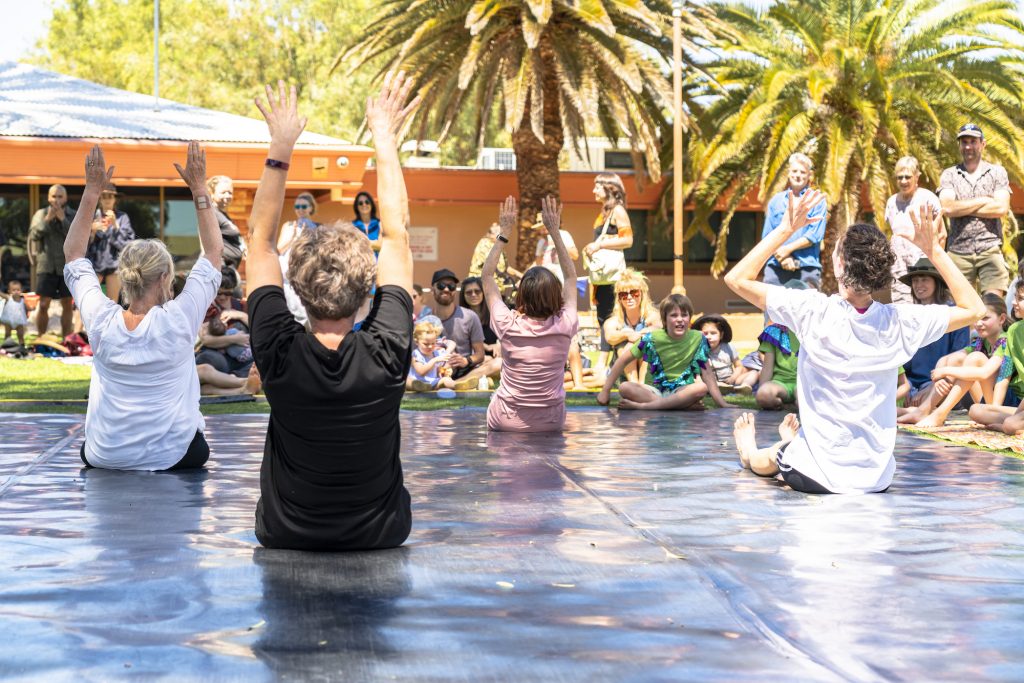
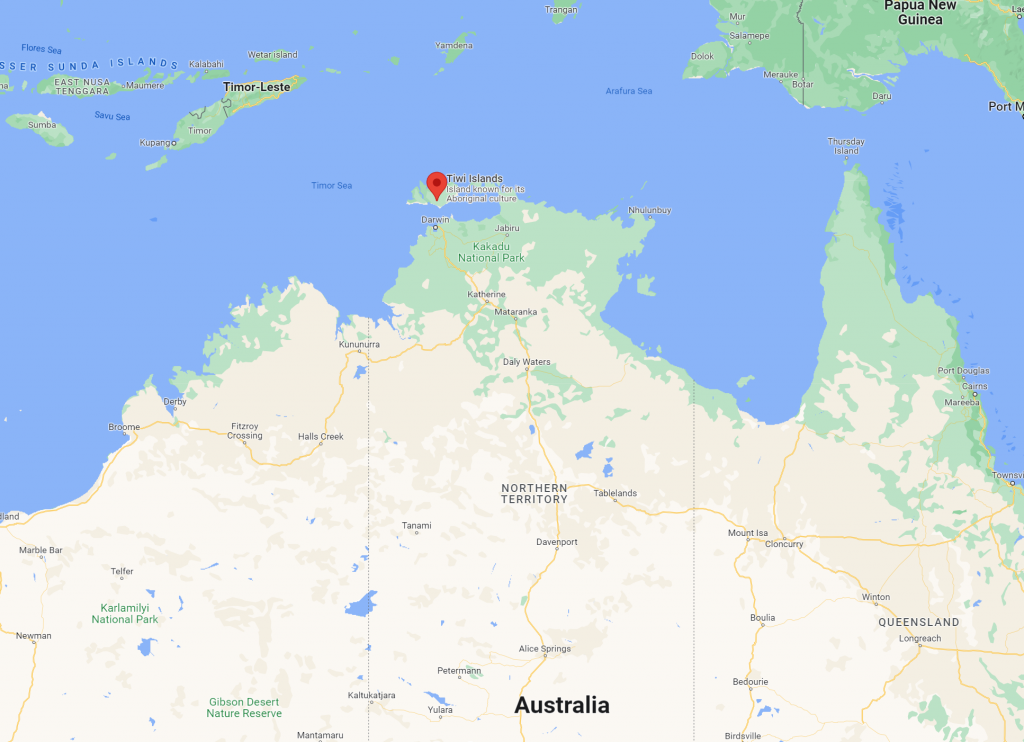
On the Tiwi Islands, 80km north of Darwin in the Northern Territory, you’ll find a business called Tiwi Enterprises. It strives for the economic betterment of Tiwi people and their community.
The organisation’s vision is “self-reliance through skills development and productivity”. And they are doing a great job, employing 26 Tiwi people, who make up 75% of the company’s workforce.
Since 2007, this 100% Tiwi owned organisation has grown to include 11 business units: Civil Works, Gardening Services, Freight Facility Operations, Building Maintenance, Community Cleaning Services, Rental Car Hire, Milikapiti Farm and Nursery, Accommodation, Tuparipiya Bus Company, Mantiyupwi Motel, Bathurst Island Airport agent and other Mantiyupwi-owned rental properties and assets.
One of Tiwi Enterprises’ contracts is with the Office of Township Leasing for the management of grass height and rubbish removal for the 114 tenants living in the area. In December last year, Tiwi Enterprises received a $10,000 Strengthening Rural Communities (SRC) grant, funded by the Tim Fairfax Family Foundation, to purchase additional equipment for their gardening services. Thanks to the SRC funding, they were able to afford a heavy-duty ride on mower to add to their fleet.
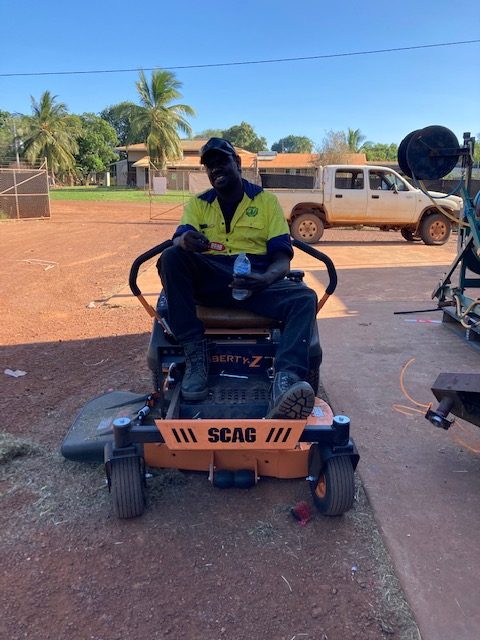
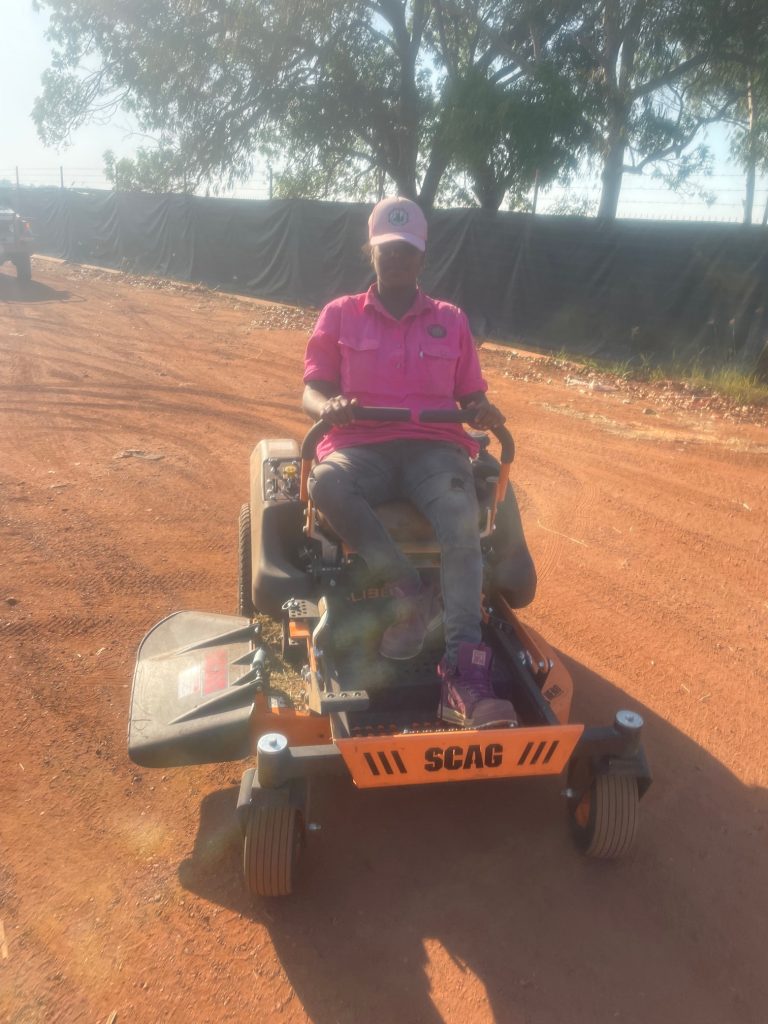
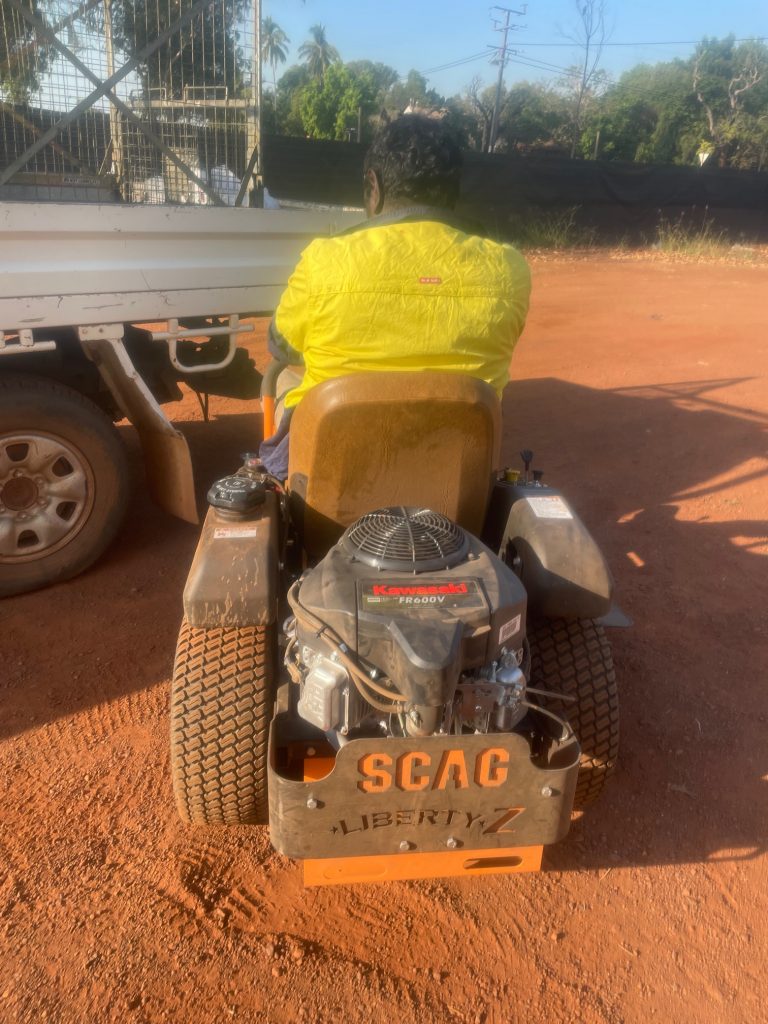
The new mower helped them win another contract to mow all Community Yards on Bathurst Island, which is 321 lots. Many of these yards were overgrown, representing a fire risk, and home to a number of snakes. But thanks to the work of the Tiwi team over an eight-week period, the whole community is enjoying improved safety.
The new contract also meant that nine new employees were hired, four of them women. There will be opportunities for any of these employees to become Leading Hands and Supervisors and to learn new skills including maintenance of machinery, supervising and administration work.
The First Nations’ Pertame language is severely endangered, and at risk of becoming yet another lost language within the next generation. Also known as Southern Arrernte, it is a Central Australian language that belongs to the Country around the Finke and Hugh Rivers, about 100 km south of Alice Springs. Right now, there are fewer than 10 fluent speakers of this language.
The Pertame School is a community-led language program working with Pertame Elders to pass their language and cultural knowledge down to the next generation. They provide a learning platform to grow the next generation of Pertame speakers through the Centre for Australian Languages and Linguistics (CALL).
In doing so, their objective is to create a thriving, connected Pertame community, with increased mental, spiritual and physical wellbeing through language and cultural renewal. With almost all fluent speakers of Pertame within the grandparent and great-grandparent generation, there was an urgent need to invest heavily in the development of community leaders and the next generation of Pertame language teachers.
Since starting in 2017, the Pertame School has grown to include school holiday programs for children, in-school classes, adults’ evening classes and a master-apprentice program. The Pertame School runs as a project through CALL within the Batchelor Institute’s research division. The Institute manages the project’s finances and provides classrooms, office space and vehicles, and CALL provides support and advice to the Pertame project, but all CALL language projects are required to self-fund through grants and philanthropic donations.
With a grant from the 2020 Larger Leverage round of FRRR’s Strengthening Rural Communities program, funded by The Maple-Brown Family Foundation, the Northern Territory’s Batchelor Institute of Indigenous Tertiary Education has continued to deliver their Master-Apprentice Program (MAP). MAP utilises innovative learning techniques originating from Indigenous communities in southern California that are centred around one-on-one oral immersion sessions with Elders – the Masters – which sees a return to the old ways of learning.
One of the apprentices is Shania Armstrong – a recent grade 12 graduate and young Traditional Owner who is taking part in MAP and teaching what she has learned to the next generation of Pertame speakers on Arrente Country.
Shania is part of her family’s dedicated multi-generational involvement in the program, with her great-grandmother, Nana Christobel Swan, one of the last Pertame speakers and the one of the program’s key ‘Masters’. Going from her great-grandmother’s reality of not being allowed to speak her language at school, to being a steward for the regeneration of Pertame has been a great source of pride for Shania and her community. Knowing that this regeneration has already and will continue to grow not just a strong source of social cohesion but a sense of self and culture, is just one of Shania’s motivations to do all she can to heal Country in this way.
In an interview with the ABC’s Healing Country program presenter Lillie Madden, Shania described her involvement in the program.
“When I got the chance to learn my language I took it. I want to keep doing what I’m doing and teach my language so it never dies. The kids love learning their language. Every time they come to a Pertame class they always have a big smile on their face.”
The FRRR grant was used to pay for qualifications and training for apprentices; language learning resources; a contribution towards transport and food costs; as well as towards apprentice employment payments.
Batchelor Institute’s CALL and the Pertame School is proud of this solutions-focused initiative and its wide-reaching impact on the broader community. Learn more here.
The traditional owners of Gunbalanya is the Gumurdul family who allow Injalak to operate on their land and are actively supportive of the art centre.
About 500 km from Darwin, you can find the region of Arnhem Land, in the Northern Territory. For six months of the year, you can cross the East Alligator River to Gunbalanya. For the remainder of the year, the river is too high, cutting Gunbalanya and the 1,200 people that live there, off from the rest of the country.
Like many First Nations communities, Gunbalanya is rich with culture and heritage, with a strong desire to pass on this traditional knowledge, particularly among young people. Indigenous community art centres play an important role in the artistic and cultural life of traditional Aboriginal artists living in remote communities.
Gunbalunya’s Injalak Arts centre in West Arnhem Land supports over 350 Indigenous Kunwinjku artists. They provide professional development programmes, workshops, mentoring support and On Country trips to collect art materials. Pre-COVID times, thousands of tourists would visit Injalak Arts every year to witness the art, music, natural environment, and many other culturally significant activities.
In the midst of COVID restrictions, with no visitors to the region allowed, Injalak Arts ran a two-week music workshop and a week-long live video production workshop that involved local musicians recording and rehearsing songs, as well as coaching and mentoring for eight members of the newly formed Media Unit who learnt all about live production. Thanks to a $10,000 Strengthening Rural Communities grant, funded by the Tim Fairfax Family Foundation, Injalak Arts was able to pay artist and consultation fees with Indigenous Australians who led the workshops.
The COVID-19 restrictions, and subsequent absence of any visitors to witness the performance, weren’t an issue for the production team, as the Media Unit used iPhones and iPads to stream the performance. People across the country were able to tune in, with some even watching from the UK.
The project brought the community together and provided an opportunity to demonstrate their creative expertise and talents, as well as developing new skills in live television production.
Injalak Arts’ Culture and Media Officer Alex Ressel explained the grant has had ongoing benefits for the community.
“We have since utilised this experience and equipment on other video projects in western Arnhem Land, so it is not necessary to employ external camera operators to document and live stream cultural events in western Arnhem Land.
“When bininj (Indigenous) people are behind the camera as well as in front of it, a radically different form of moving image work is created, enabling a culture to define its own mode of representation, ask the right questions.
“It means we can employ local Indigenous people and keep money circulating within community, as well as making the representation of Kunwinjku culture to wide and diverse audiences.”

